Beyond Modernism:
“Perfect Abstraction” in Adi Da
Samraj’s Orpheus and Linead Suites
Gary J. Coates, Professor
Victor L. Regnier Distinguished Faculty Chair
Department of Architecture
Kansas State University
Manhattan, KS 66506
USA

Professor Gary J. Coates is the Victor L. Regnier Distinguished Faculty Chair in the Department of Architecture at Kansas State University. He has published widely in scholarly and professional journals and is a frequent lecturer at conferences and universities in the United States and Europe. His five books include The Architecture of Carl Nyrén. He has been recognized for teaching excellence by the American Institute of Architects and the Association of Collegiate Schools of Architecture.
Published in 2A Magazine Issue #17- Spring 2011
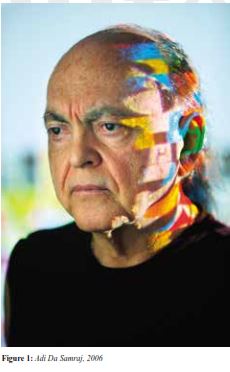
Introduction
Artist, author and spiritual teacher Adi Da Samraj (1939-2008) observed that “in the ‘modernist’ tradition of the early 20 century, a new, and, potentially, sacred, art emerged as a possibility—an art of profundity, free of both ‘official’ religion and merely secular impulses”.1th Yet, because of the process of civilizational collapse that was brought on by two World Wars and a global depression, he also noted that the liberatory potential of this artistic revolution was never able to come to fruition. Only now, at the beginning of the twenty-first century, did Adi Da believe that it was possible and, indeed, urgently necessary for the “emergence of a new order of both civilization and culture—and, thus, for the 2 emergence of a new, and truly sacred (non-religious, non-secular, and Really non-egoic), art.”
For more than four decades Adi Da labored to create such a transformational art, experimenting with a variety of media and modes of expression. In all of this work he sought to create forms of art that would draw the fully participatory viewer into the inherently blissful state of nondual awareness that he asserted naturally arises once we transcend the sense of being a separate “self” confronting a separate (and thus inherently threatening) “world”. To make such an experience of “aesthetic ecstasy” possible he formed each image to be the “Inherently egoless (or ‘point of view’-less) Direct Self-Presentation of Reality Itself,” which he describes as being entirely “Non-separate, One and Indivisible.”
Adi Da described the “aperspectival, anegoic, and aniconic” images he created with digital means between 2006 and 2008 as being not only the final resolution of his own lifelong work as a visual artist, but also as the fulfillment of the spiritual impulse that was only implicit in the abstract images of such early twentieth century artists as Kandinsky, Malevich and Mondrian, i.e., the creation of an art that would enable the viewer to be completely liberated, if only for a moment, from the binding limits of “point of view” itself.
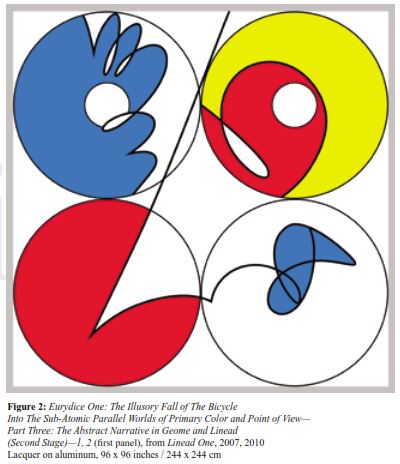
Form and Meaning in the Orpheus and Linead Suites (2007)
From September 9–October 9, 2010, an exhibition entitled Adi Da Samraj: Orpheus and Linead, was held at the Sundaram Tagore Gallery in New York City featuring eleven monumental abstract images created by the artist in 2007.
As re-interpreted by Adi Da, the essential story underlying these suites is the tale of a heroic being from the world of light,
Orpheus, who descends into the world of darkness and death in order to bring his beloved wife, Eurydice, back to the world of light and life. Unlike the mythical Orpheus, however, who looked back before Eurydice was fully emerged from the underworld, thereby losing her forever, Adi Da’s Orpheus never looks back and thus succeeds in bringing his beloved back with him to the world of light. Thus, Adi Da’s version of the story is a divine comedy rather than an archetypal human tragedy.

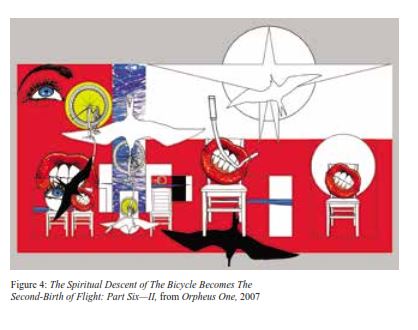

The process by which Adi Da composed these suites reveals much about how he worked to integrate form and meaning in all of his artistic images. As can be seen in Figures 3 and 4, he began by taking photographs of natural forms–a chair, a bicycle, female subjects and a bird in flight–in direct response to his own radical re-imagining of the Orpheus myth.
He next composed these images into digital “sketches”, and proceeded to abstract each of them using a visual language made up of:
the primary colors, as well as black and white; “Geomes” (the primary geometries–squares, circles and triangles); and “Lineads” (free flowing hand-drawn lines he made for each suite).
As a result of this iterative process of ever-increasing abstraction, each successive image became the basis for the next one, until the final image became “utterly free in and as itself—independent of memory and the conventions of ordinary perception.”

According to Adi Da, his use of pure abstraction in these suites (or any others) did not mean that his images were without meaning. Indeed, as he repeatedly stated, “Art is meaning…Meaning is the discipline of art.”
Adi Da’s artistic meanings, however, are expressed in varied ways and at a number of different levels, as can be understood even by a brief consideration of three sets of six images from the Linead One suite, each of which, when read from left to right, recounts Adi Da’s version of the Orpheus myth. In all of the first panels, it is possible to discern the presence of an abstract male figure (Orpheus) appearing in the realm of light with his bicycle ready to descend into Hades, while in all the second panels a similarly abstract female figure (Eurydice) can be seen to be present, apparently entangled in the rungs of a ladder in the yellow-red realm.
In the final four panels of each series, the seemingly failed attempt of Orpheus to bring Eurydice out of darkness into light, as recounted in the traditional narrative, unfolds as a rising and falling motion of these two figures. “In the end, however, and in the last image, all apparent difference (and all ‘point of view’) is seen to be illusory, although all appearances still register as red, yellow, blue, white, and black.”
Thus, in the final images of Figures 6, 7 and 8 it can be seen that there is no realm either high or low that is bereft of transcendental light.
In all three sets of six images, Adi Da Samraj has created an “abstract narrative,” a brightly illumined non-representational visual world that does not so much tell a story as it generates “a field of meaning that coincides with the essential meaning of the myth, as re-imagined by Adi Da.”
The ultimate meaning of these images and all of Adi Da
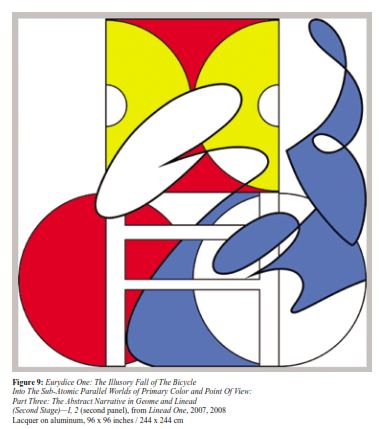
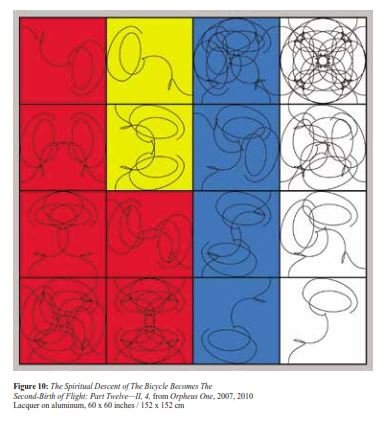
Samraj’s art, however, is never to be found at the level of the conceptual mind, literary narrative, or any apparently recognizable forms. When experienced as he intended, the true “meaning-force” of all of his images is non-verbal and paradoxical, existing “between and beyond both representation and abstraction.”
This final, tacitly felt level of meaning only arises, however, when “the ‘point of view’made and intrinsically ego-bound abstractions that comprise ordinary perception” are rendered back to the “egoless Reality-Source” within which all perception mysteriously arises.
This timeless moment of “aesthetic ecstasy” is what Adi Da Samraj calls the “ego-transcending process of Perfect Abstraction.”

